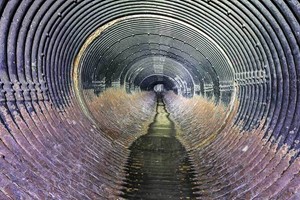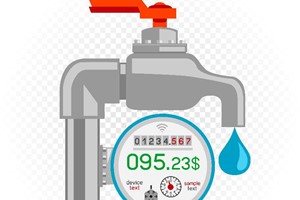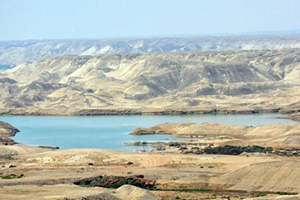Water utilities are optimistic about their ability to overcome challenges associated with aging infrastructure, lead and copper rule compliance and climate change, according to the state of the water industry report released in conjunction with the American Water Works Association’s annual meeting.
The AWWA's 20th annual report report, based on a survey conducted last fall of more than 4,000 members, lists rehabilitating or replacing aging infrastructure and ensuring long-term availability of drinking water supplies as the top concerns of survey respondents.
The third biggest concern is acquiring funding for capital improvements. Despite record funding levels for water infrastructure through the Infrastructure Investment and Jobs Act (IIJA) and the Water Infrastructure Finance and Innovation Act (WIFIA), utilities are still evaluating funding strategies and project timelines, the report notes.
While federal funding levels may not be enough to address all that is needed to build or rehabilitate infrastructure, “it’s more than we’ve ever had before, and we shouldn’t ignore that fact,” said David LaFrance, AWWA’s CEO, at the meeting, held June 11-14 in Toronto.
The survey was conducted before the U.S. Environmental Protection Agency released a proposed drinking water standard for certain types of per- and polyfluorinated substances (PFAS) this spring. Treating and destroying these ‘forever’ chemicals remains a top concern among water utilities, several conference attendees noted, and several sessions at the conference were devoted to PFAS treatment.
Regulation of PFAS “will impact many, many systems, and it will dominate capital plans for the better part of a decade for the systems that are impacted,” Chris Corwin, drinking water lead at Brown and Caldwell said.
But AWWA's LaFrance told ENR that water utilities have learned to take challenges in stride. “One of the things about the water sector is that we’re very resilient, and given some time, we always find solutions," he said.
For example, according to the survey, 68% of those surveyed indicate they are implementing lead-line replacement programs to comply with the Lead and Copper Rule improvement regulation enacted in 2021, and 38% have capital improvement projects planned that include lead service-line replacements.
Managing Cost Escalation on Projects
Another challenge has been well-documented cost increases, worker shortages and supply-chain issues. To mitigate rising capital costs, Toronto Water packaged portions of projects in bundles, ensuring that cost estimates were continually updated, and in some cases, descoped aspects of some projects, according to Gary Boychuck, the utility's manager of capital works delivery. Most recently, the Toronto Water adopted an approach of prepaying 20% to 30% on a contract.
“While not yet proven, we appreciate suppliers won’t hold prices for subs and general contractors, so prepayment could help,” said Boychuck. “All these strategies do one or two things: they manage the work to fit within the available approved budget, or they accelerate awards, purchase orders, change orders and other payments to avoid price increases between bid and actual payment, thereby decreasing contractor risk,” he added.
Nearly 10,000 people attended the conference, LaFrance said, noting that though that number is still shy of pre-Covid levels, it’s above attendance at last year’s meeting.
By Pam McFarland














